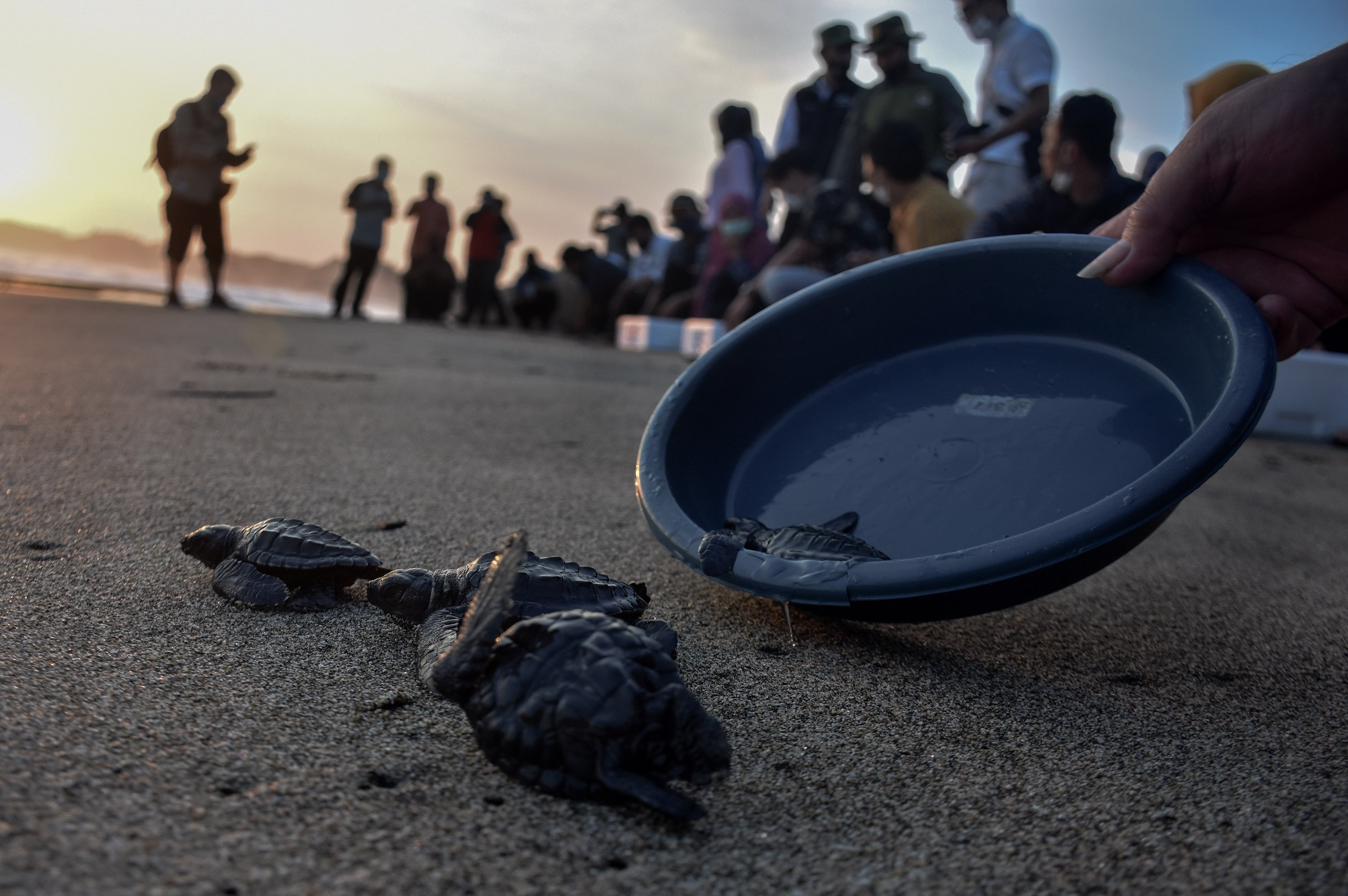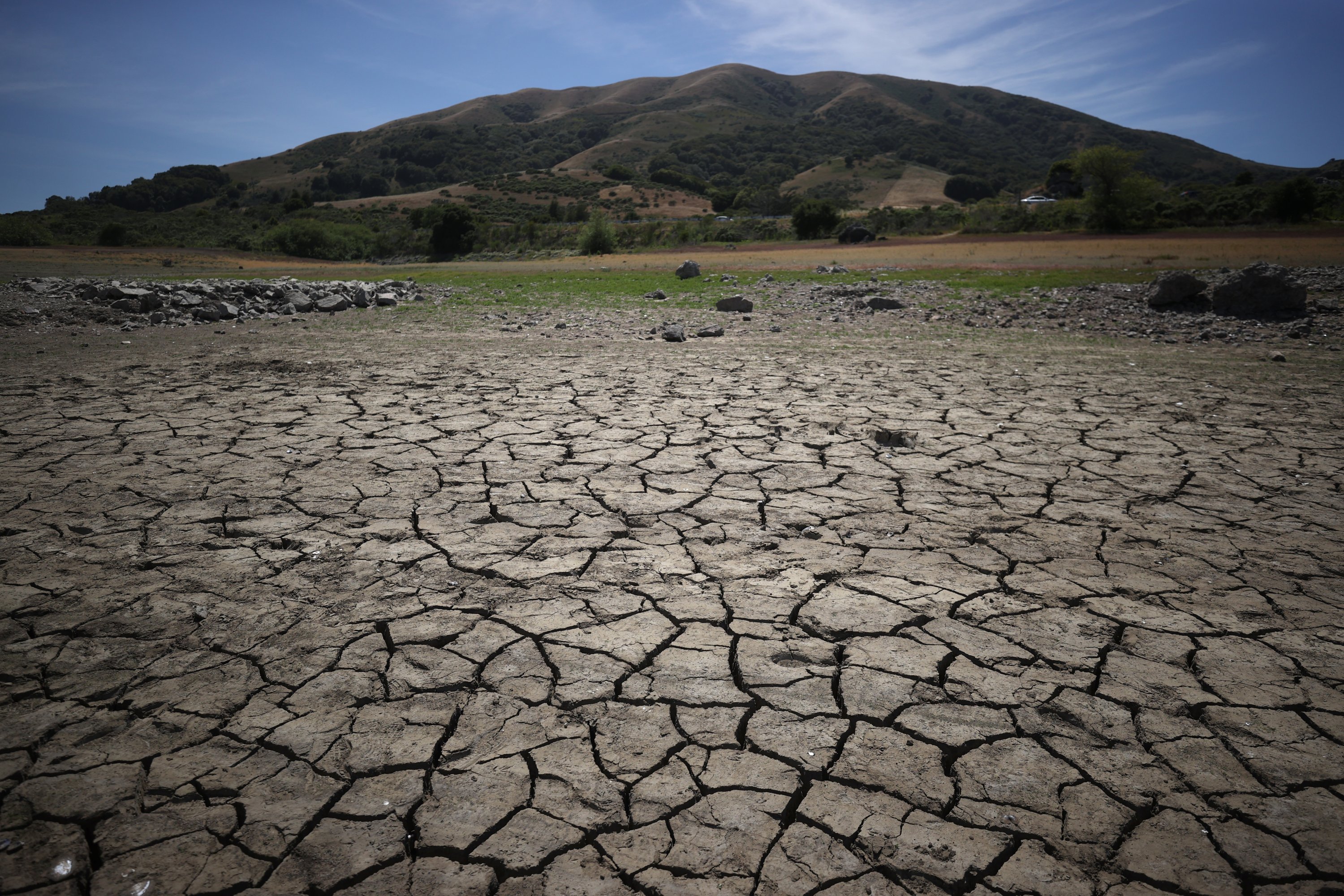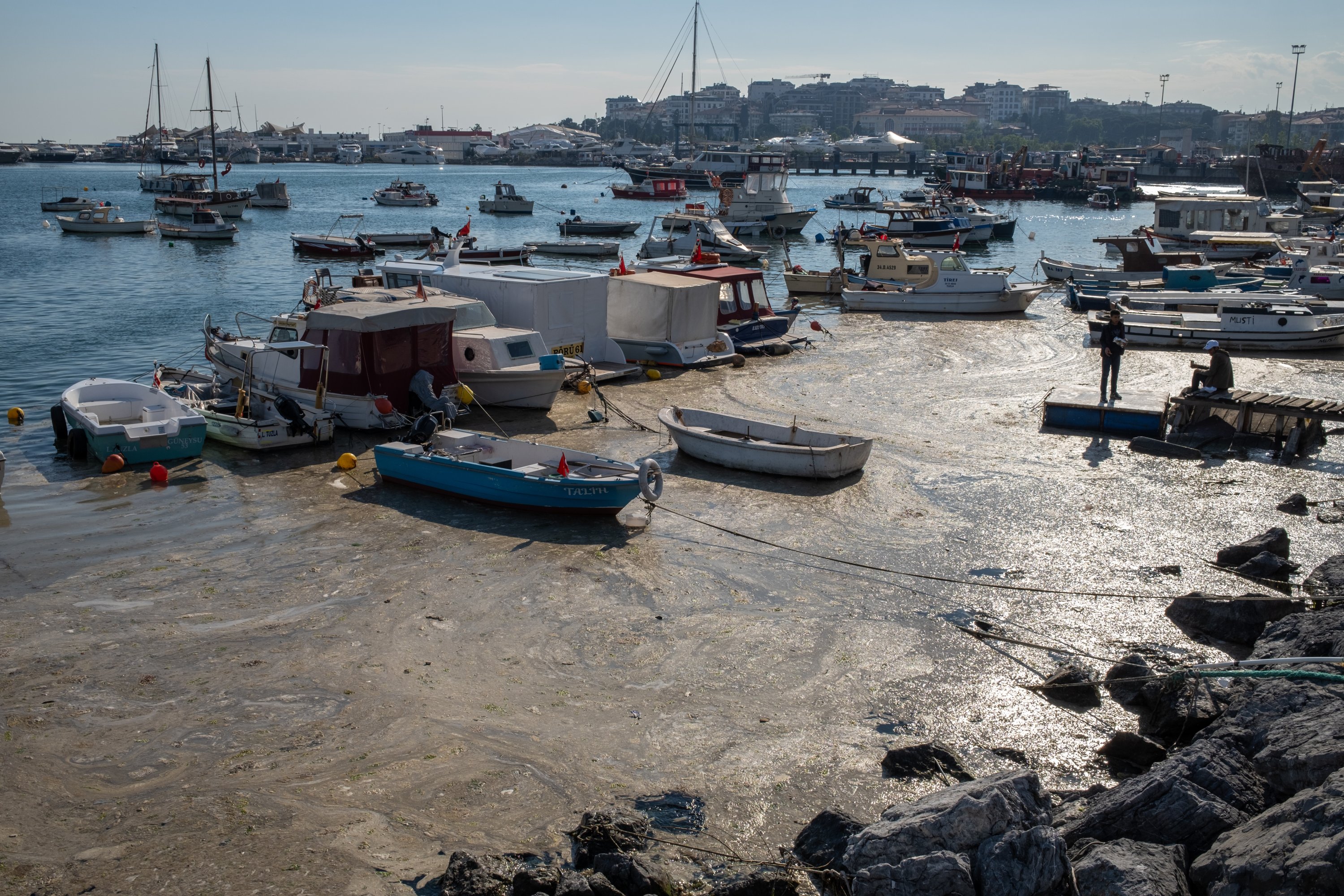© Turkuvaz Haberleşme ve Yayıncılık 2024
We are in an era where humanity is the dominant force in our world. The productions put forward have exceeded the biomass on earth and this development has created severe pressure on our natural environment.
In fact, there is a balance, a self-control mechanism in nature that can overcome an irregularity or contamination by dissolving it within itself. However, if a certain threshold value is exceeded, an external influence is required to restore the balance.
We can think of it as the human body. Whenever a foreign object enters our body, our defense system immediately intervenes and removes the negativity. However, if the density of the foreign object increases, the defense may be insufficient, and in this case, we need treatment with external support to get better.
According to scientists, geologically, we have entered a new era after the Holocene. The new age named Anthropocene, meaning “Human Age” started 300 years ago and represents a phase when humankind is predominant over nature and causes “irreversible” damages after having previously enjoyed harmony between humankind and nature.
Climate change is the most important among the disasters that have occupied the world agenda. There are numerous studies on this subject and the most crucial of them is carried out by the Intergovernmental Panel on Climate Change (IPCC).
The IPCC was established in 1988 with a purpose to provide decision-makers with a scientific basis for the development of climate policies. It publishes an Evaluation Report every 6-7 years. Currently, the preparations for the Sixth Evaluation Report are continuing.
While these studies continue, Agence France-Presse (AFP) revealed that the draft report of a working group had been seized. The news led to great repercussions in world public opinion since the expected negative effects of climate change included in the report are daunting.
It was affirmed by the IPCC that the Sixth The Evaluation Report would be shared with the public in February 2022. However, the criticism that this date will be too late is justified to a certain extent.
In fact, the first United Nations Climate Change Parties Meeting after the official entry into force of the Paris Agreement in 2015 will be held in Glasgow at the end of this year.
According to the information in the news, the draft report is the most comprehensive report on how climate change has turned our world upside down. The highlight of the study, which consists of approximately 4,000 pages, is the emphasis that the worst is yet to come and that the dangerous threshold values are closer than predicted.
In 2020, our world experienced considerable stagnation, especially in transportation and production activities due to COVID-19. In this process, 2.4 billion tons of reduction, which was 7% on a proportional basis, was recorded as the largest greenhouse gas emission reduction in history.
However, the concentration of carbon dioxide in the atmosphere continued to increase. According to the U.S. National Atmospheric and Oceanic Administration (NOAA) assessments, in 2020, when economic growth slowed down, carbon dioxide concentration increased by 2.6 ppm compared to the previous year.
It is because the threshold values within the scope of the atmosphere's self-control have been reached. And when a certain saturation is reached, no more CO2 can be swallowed, and the forests turn into sources that emit CO2. Likewise, the fires in the Amazons are now turning into a source that net produces emissions.
Another issue highlighted in the report is compliance. The creepy phrase is presented as "life on earth can adapt to the change that comes with climate change by creating new species and ecosystems but humankind cannot do this. It cannot transform into a different species.”
A decade ago, scientists believed it was safe for the future to limit global warming to well below 2, preferably to 1.5 degrees Celsius (an increase to the average of between 2.7 - 3.6 degrees Fahrenheit), compared to pre-industrial level and signed the Paris Agreement to ensure that until 2050.
However, according to the draft report, it is emphasized that in the current trend framework, the global temperature increase is heading towards an increase to the average of 3 degrees Celsius at best.
In previous climate models, it was estimated that climate change might not happen before 2100. However, the draft report emphasizes that continued warming, even above 1.5 degrees Celsius can have "advanced serious, centuries-long and in some cases irreversible consequences."
The increasing global temperature can create a domino effect if it reaches a certain value. For example, frozen soils at the poles can thaw. This in turn releases methane that had been locked away. Methane is an extremely potent greenhouse gas. This is an element that can increase global temperatures even more.
The melting of land glaciers is also an irreversible effect, even if carbon emissions are rapidly reduced. As a result, it leads to a rise in the sea level. Again, the sudden change of the Amazon rainforest to the savanna for example, which many scientists believe can be triggered by a low-temperature increase.
It was stated that even with an increase of 1.5 degrees Celsius, many organisms will have problems adapting to changing conditions. Coral reefs, which are the main source of life for a population of around 500 million, are one of them.
The glacial melts triggered by the temperature increase will cause cultures to disappear as well. Local people in the Arctic are one of the groups that face this threat the most, in the shadow of constantly record-breaking temperatures.
In the report, it is stated that with the effects of the climate crisis, approximately 166 million people living in Central America and Africa were provided with food support due to climate change, and this number will increase exponentially in the next 30 years. At this point, it is stated that tens of millions of additional people will face chronic hunger by 2050, and if inequality gradually deepens, 130 million more people will experience extreme poverty in just 10 years.
Again, by 2050, 8 to 80 million more people worldwide are expected to be at risk of starvation. Unfortunately, 1.4 million additional African children will see their growth stunted by malnutrition, which is already a major problem.
Another problem triggered by the increasing temperature is drought. If the global temperature increase is 1.5 degrees Celsius, it is estimated that 350 million more people living in urban areas will be exposed to water shortages due to drought. If the expected increase happens to be 2 degrees Celsius, in other words, in case of an increase of half a degree, the population that will be affected by drought in urban areas is expected to increase by 60 million to 410 million, while the number of people who will be exposed to heatwaves is expected to increase by 420 million.
According to the report, food production is also adversely affected by climate change. It is stated that there has been a decrease of 4% to 10% in crop production in the last 30 years.
There was also evidence of a serious decrease in the fish population, which is one of the important protein sources. In this context, the report states that there was a 4.1% decrease in the maximum sustainable fish harvest between 1930 and 2010, and it is also emphasized that this value increased by 15% to 35% in some regions.
Another issue that the report emphasizes is the melting of glaciers, which is one of the thresholds where irreversible effects occur. It is stated that in the last 40 years, summer sea ice in the Arctic Sea has decreased by 25%.
In case of an increase in temperature of 2 degrees Celsius, it is predicted that the glaciers on Greenland and West Antarctica will also melt, which means that the oceans will rise by at least 13 meters (42.6 feet). This means that many countries may be submerged in water.
Pointing out that there have been serious increases in seawater temperature, the report points out that since 1925, marine heatwaves have increased by 34% and lasted 17% longer.
According to the report, climate change is causing species to become extinct much faster, 1000 times faster than before the Anthropocene Age. If the temperature rise is 1.5 degrees Celsius, 70%-90% of the world's coral reefs will die, and if the increase is 2-3 degrees Celsius, it is highly likely that at least 54% of land and sea species will disappear this century.
The impact of climate change in freshwater fisheries is likely to reduce local biodiversity by 75% by 2075. There is a risk of extinction of 59% of green sea turtles and 67% of Caretta Carettas in the Mediterranean breeding area with the increase in seawater level.

In the report, it is predicted that climate change will increase communicable diseases; moreover, it will cause an additional 2.25 billion people to face the threat of dengue fever, especially in the case of High Emissions Scenarios. However, by 2050, it is among the warnings that half of the world's population will be at risk of vector-based diseases such as yellow fever and zika virus.
The most obvious indicator of climate change is undoubtedly rising global temperatures. This situation has upset the balance of many natural systems. On the one hand, increasing precipitation and disasters such as floods and overflows are experienced, whilst on the other, drought is on the rise. While rising temperatures and drought prolong fire seasons, they also cause a double increase in combustible areas. At 2 degrees Celsius, severe drought in Brazilian natural areas is expected to quadruple.
With the increase in temperature, the precipitation, which increases in intensity, continues to affect life negatively as it brings with it floods and overflows. According to the report, if the global temperature increase is 1.5 degrees Celsius, the number of people affected by floods is expected to double, even triple, in countries such as Brazil, Argentina and Colombia, while in Ecuador four times as many people could be affected. Peru could be the worst hit among all the South American countries, as five times as many people could be affected. If the temperature rise is 2 degrees Celsius, it seems inevitable that the 400 million urban population will experience water shortages as a result of extreme drought.
Another effect of the increase in temperature is heat waves. If the increase rises from 1.5 degrees Celsius to 2 degrees Celsius, 420 million additional people are expected to be exposed to heatwaves. It is stated that millions of city dwellers of Sub-Saharan Africa and South Asia will be exposed to deadly heat for at least 30 days a year by 2080.
The increase in temperature will also lead to the loss of the workforce. So much so that a loss of 250 working days on an annual basis in some places towards the year 2100 is among the forecasts included in the report.

Migration will be one of the biggest impacts of climate change. Drought, heavy rainfall and rising sea levels will trigger displacement. According to the report, an average of 128 million people have been displaced since 2008 due to disasters such as floods and storms. In the next 30 years, it is expected that there will be a six-fold increase in internal migration. It is stated that 180 million Americans will experience water stress if the temperature rise is 2.7 degrees Celsius.
One of the areas most affected by climate change is the coastal cities. In 2050, it is predicted that hundreds of millions of people living in coastal cities will be exposed to more frequent storms due to floods and rising sea levels. If the temperature increase exceeds the targeted 2 degrees Celsius, there will be an additional tens of billions of dollars in compliance costs annually in some regions such as Africa.
Our world is under a great threat and it creates a reaction against the heavy pressure on it. We are faced with many problems, such as increased precipitation, heat, marine mucilage (sea snot), etc., and we pay the price together. It is also possible that the sea snot event that had been seen in Marmara recently will be carried to further dimensions. Because the rise in seawater temperature will open the door to the development and reproduction of stronger species that will adapt to new conditions. We should also keep in mind that this situation may pave the way for the proliferation of more effective phytoplankton, such as mucilage and algae bloom, that harm our blue homeland seas.

But more is needed. The solution requires transformation and change. New lifestyles, business models, consumption and production habits with low carbon and water footprints are required. Like the transition to plant-based nutrition, which means a 70% reduction in food-based emissions by 2050.
For an effective solution, habits and processes must be changed at all levels and all scales. At the level of individuals, societies, businesses, institutions, and governments. Therefore, we need to redefine our lifestyles and consumption styles. Yes, change and transformation are necessary for the solution. We all have that strength and will.
